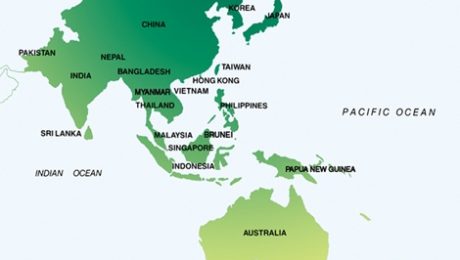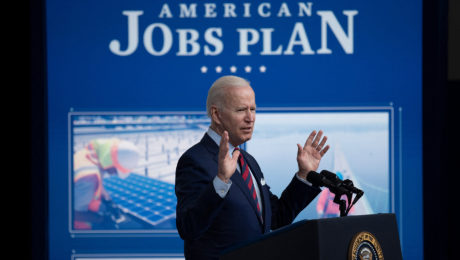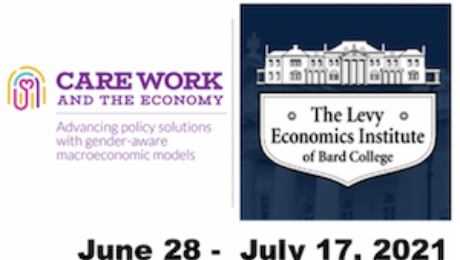Systemic Resilience and Carework: An Asia-Pacific Perspective
Below is an excerpt from a recent piece “Systemic Resilience and Carework: An Asia-Pacific Perspective” by Ito Peng, contributing researcher for the Understanding and Measuring Care group. This article was published by Migrants and Systemic Resilience: A Global COVID19 Research and Policy Hub (Mig-Res-Hub).
In this think-piece I consider how we can build a resilient systemic response to the COVID-19 pandemic and future crises. I focus on systemic resilience in relation to carework and global migration of careworkers, and I approach this from an Asia-Pacific perspective. One of the fault lines exposed by the COVID-19 is the vulnerability of the existing care, carework and migration infrastructure to exogenous shocks. Asia-Pacific is an important site to examine because it is one of the major sites of global care migration, both as sender and receiver of migrant careworkers. This think-piece draws on the research from our global partnership project based at the University of Toronto, which looks at the dynamics of careworker migration in Asia-Pacific and the interconnections between social and economic forces and policies in shaping those dynamics from both sending and receiving country perspectives. The next section briefly outlines the pandemic’s impacts on carework and care migration in Asia-Pacific. I then discuss how we might achieve systemic resilience in global care migration by first emphasizing how our care systems are interlocked with the global migration of careworkers (what I call a global care interlock), and second, how we might achieve systemic resilience. Understanding the global care interlock is an important prerequisite to systemic resilience because it allows us to see carework and migration of careworkers as a part of a larger global infrastructure or ecosystem that has been, consciously or unconsciously, built, managed and sustained by multiple actors in different parts of the globe.
Read the entire article here.
This blog was authored by Ito Peng, contributing research for the Understanding and Measuring Care research group.
- Published in Asia-Pacific, Child Care, COVID 19, Elder Care, Migrant Care Workers, Understanding and Measuring Care
Biden’s American Jobs Plan Could Be Monumental for the Care Economy in the U.S.
Last month, the Biden administration revealed the details of the $2 trillion American Jobs Plan.
The plan recognizes that investing in the care economy, as with investments in traditional infrastructure, can lift incomes, unleash productivity, and pave the path towards a more equitable economic recovery and growth.
Addressing the care crisis
Built into the plan is a pledge to “solidify the infrastructure of our care economy by creating jobs and raising wages and benefits for essential home care workers.” The plan calls for Congress to invest $400 billion towards expanding access to quality, affordable home- or community-based care for aging relatives and people with disabilities. These investments will help Americans to obtain the long-term services and support they need, while creating new jobs and offering care workers a long-overdue raise, stronger benefits, and an opportunity to organize or join a union and collectively bargain. Research has shown that increasing the pay of care workers leads to better quality care overall. Through creating well-paying care jobs with benefits and o collectively bargaining rights, as well as building state infrastructure, the plan aims to improve both the quality of job for care workers and the quality of service for care recipients.
Lack of access to childcare makes it harder for parents, especially mothers, to fully participate in the workforce, hurting families and hindering U.S. growth and competitiveness. In areas with the greatest shortage of child care slots, women’s labor force participation is about three percentage points less than in areas with a high capacity of child care slots. The pandemic has severely exacerbated this problem with more than 1 in 4 facilities still remaining closed as of December 2020. President Biden is calling on Congress to provide $25 billion to help upgrade child care facilities and increase the supply of child care in areas that need it most. These funds are to be provided through a Child Care Growth and Innovation Fund for states to build a supply of infant and toddler care in high-need areas. Also included in this $25 billion is a call for expanded tax credits to incentivize businesses to provide care facilities at their establishments. This will grant accessible, high quality care and learning environments for children of employees. This particular part of the plan is structured so that employers will receive 50 percent of the first $1 million of construction costs per facility.
Investment in care is investment in infrastructure
As Cecelia Rouse, Chair of the Economic Advisors for the Biden administration, recently indicated during a recent press conference, we need to “upgrade our definition of infrastructure” to include the care economy. Rouse defended the Biden administration’s plan to spend $400 billion of the infrastructure plan’s budget on the care economy, defining it as a legitimate infrastructure investment and a key component to addressing economic inequities in the U.S. The care economy is critical to U.S. economic activity, and its absence would greatly hinder economic productivity. The inclusion of care work and the care economy in the American Jobs Plan is a critical first step in mending a critically broken care infrastructure in the U.S.
Still, it is only the first step. The U.S. is the only industrialized nation that fails to provide national paid family leave and medical leave programs, and where hundreds of thousand sit on waiting lists for desperately needed home care. LeadingAge, which represents service providers in the sector, estimates that half of all Americans will need long-term services and support after turning 65, and that by 2040, a quarter of the U.S. population will be 65 or older. In addition to the President’s proposal for the care economy, we also need investments to finally put America on a path to universal childcare and early learning, national paid family and medical leave and paid sick days for all workers. The COVID-19 pandemic has exposed both the importance of care work and the vulnerabilities of our care infrastructure. At the same time, it has also created an opportunity for us to rethink the value of care and care work, opening ways for us to rebuild a more resilient care infrastructure and a more inclusive economy.
This blog was authored by Jenn Brown, CWE-GAM Communications Assistant
- Published in Child Care, Economic Recovery, Policy, U.S.
What is the Care Economy and Why Should We Care?
In our project, we aim to promote and advocate for gender and socioeconomic equalities. We do this by working to reduce gender gaps in economic outcomes and by showing and properly valuing social and economic contributions of caregivers; and integrating care into macroeconomic policy making toolkits.
In this era of demographic shifts, economic change and chronic underinvestment in care provisioning, innovative policy solutions are desperately needed, now more than ever. Sustainable and inclusive development requires gender-sensitive policy tools that integrate new understandings of care work and its connections with labor market supply and economic and welfare outcomes.
The Care Work and the Economy Project, currently based at the Economics Department of American University and co-led by Maria S. Floro and Elizabeth King, includes more than 30 scholars around the globe, working closely together to provide policy makers, scholars, researchers and advocacy groups with gender-aware data, empirical evidence and analytical tools needed to promote creative macroeconomic and social policy solutions. In the next phase of the project, Care Economies in Context, we will be scaling up our project to include 8 different countries, in 4 global regions. I will be leading this next phase of the project, which will be based at the University of Toronto.
I define Care work is defined broadly as work and relationships that are necessary for the health, welfare, maintenance and protection of all people – young and old, able bodied, disabled, and frail. This definition may seem broad – but care– at its core is a very basic human need and a necessity. Whether we know it or now, we all participate in providing care work – paid or unpaid, and in receiving care every day.
By care economy, I am referring to the sector of economy that is responsible for the provision of care and services that contribute to the nurturing and reproduction of current and future populations. More specifically, it involves child care, elder care, education, healthcare, and personal social and domestic services that are provided in both paid and unpaid forms and within formal and informal sectors.
Care work is important because it is important work that sustains life. It is also important now in particular because it is one of the fastest expanding economic sectors and a major driver of employment growth and economic development around the world. For example, across the OCED, the service sector economy now accounts for over 70 percent of total employment and GDP. In lower- and middle-income countries, it is estimated to comprise nearly 60 percent of GDP. Within the service sector economy, care services is one of the fastest growing subsectors.
The International Labour Organization (ILO) estimates that the global employment in care jobs is expected to grow from 206 million to 358 million by 2030 simply based on sociodemographic changes. The figure will be even more dramatic to 475 million if governments invest resources to meet the UN sustainable development goal targets on education, health, long-term care and gender equality.
In Canada, the service sector already makes up for 75 percent of employment and 78 percent of GDP. Within this sector, healthcare, social assistance and education services are key drivers of economic and employment growth. In the U.S., healthcare is already the largest employer, larger than steel and auto industries put together. In short, our current and future economy is and will be increasing dominated by care services and care work.
However, at the same time, much of the care work continues to be performed for no pay, by families and friends, at home and in communities. This unpaid care work is not including in in our national GDP because GDP only takes into account work that is done for pay in the formal market. Therefore, if we only look at the GDP as a measure of the economy and economy growth, we miss a huge segment of the economy and economic activities. As the pandemic has shown, without both paid or unpaid care work, our economy will not be able to function effectively, nor would it be able to sustain itself.
What we are trying to do in our project is to make the care economy clearer and more visible by measuring and mapping out the size and shape of the economy, and to develop macroeconomic models that would help policymakers and civil society actors to develop better policies and better strategies to ensure more sustainable and equality inducing economic growth.
Listen to the full talk “The Care Work and the Economy Project” to learn about what the care economy is and why we should know more about it, particularly now.
The blog was authored by Ito Peng, contributing researcher for the Understanding and Measuring Care research cluster
- Published in Canada, Child Care, Economic Modeling, Elder Care, Expert Dialogues & Forums, Feminist Economics, OECD




